Should you suppose constructing a profession as a jewellery designer is difficult at present, think about what it was like 50 years in the past, when the ladies’s motion was simply catching hearth – or a century in the past when the suffragettes have been battling within the streets for our proper to vote.
But jewellery is an artwork kind ladies have at all times had a pure affinity for. We’re the first wearers, in spite of everything, and jewellery is usually intently related to vogue. Designing and making jewellery is a craft that requires a pointy eye and never a lot muscle. It may be accomplished quietly behind closed doorways. Extra typically than not, all through historical past, a person stood at these doorways and ran the enterprise.
There’s most likely a lot we don’t (and should by no means) know in regards to the historical past of girls jewelers. However we all know ladies have been influencing what different ladies wore as their crowning glory, at the least way back to the mid-Nineteenth century.
Right here’s an outline of my long-running collection “Girls Who Paved the Method,” so you’ll be able to scan that pivotal interval wherein feminine jewelers emerged from the shadows to form jewellery design and the jewellery trade as we all know it.
Click on by on the finish of every capsule to learn my authentic profile, in its entirety, with extra fairly footage.
Charlotte Isabella Newman (1836-1920)
She paved the best way for the ladies who paved the best way. They known as her Mrs. Newman.
Launching her profession within the 1860s, when enterprise and jewellery manufacture have been male-only, Charlotte Newman produced sought-after jewels and, in the end, ran her personal store on Savile Row. Even on the peak of her profession, with medals below her belt and males in her make use of, she answered to her husband’s identify and stamped her jewels “Mrs N.”
Today, that mark has change into extremely collectible, and is prone to get much more so.
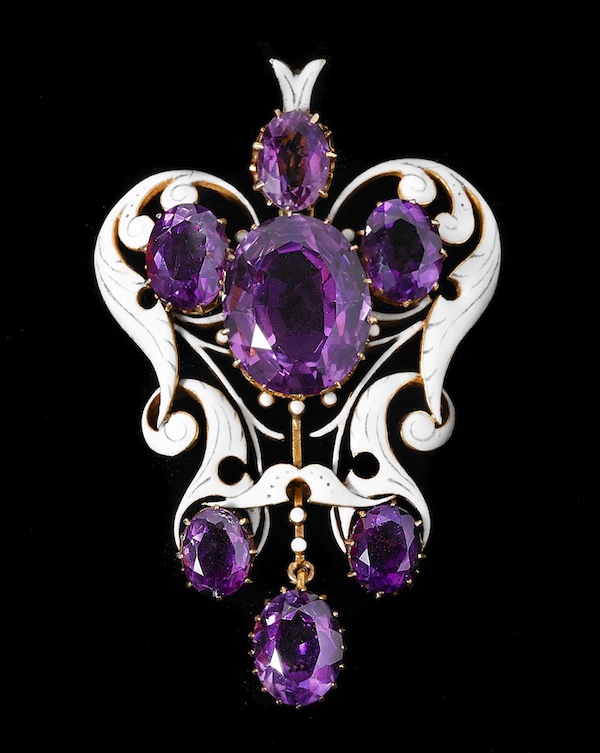
By the point this pendant was made, Mrs. Newman had been producing jewellery for at the least 25 years and operating her personal store for six. Jewellery historians credit score Charlotte Isabella Newman as the primary vital feminine studio jeweler. Lively in London for the final 4 a long time of the Nineteenth century, she obtained her begin working for jeweler John Brogden.
Charlotte Newman discovered her commerce on the Authorities Artwork College in South Kensington earlier than turning into assistant to Brogden, who inherited a household enterprise established in 1796. Some consider Mrs. Newman might have been producing jewellery earlier than her personal mark started to appear. When this amethyst bracelet bearing Brogden’s mark from the 1870s got here up on the market at Sotheby’s London in 2007, the catalog description steered Mrs. Newman might have had a hand in it.
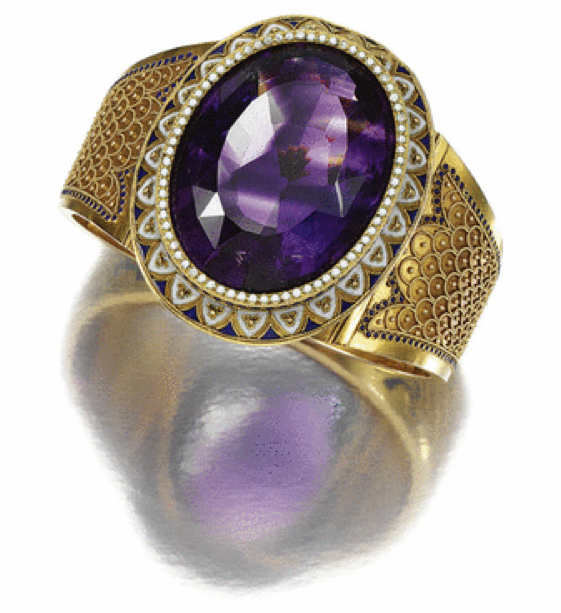
A talented goldsmith, Newman had a knack for producing beautiful jewels in a spread of historical types, from Byzantine to Renaissance Revival, in a approach that suited present tastes. Given the starvation for archeological revival jewellery in Victorian England, that made her a invaluable asset.
She exhibited with Brogden in Paris in 1867 and in 1878, when he was awarded the Legion d’Honneur, and was even given a medal of honor of her personal as a collaborator.
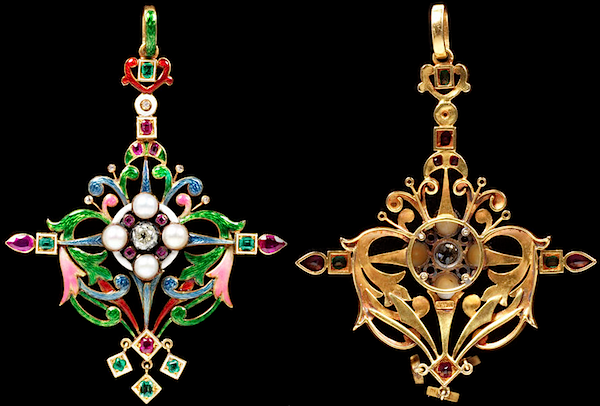
After Brogden’s dying in 1884, she established her personal enterprise, retaining lots of the craftsmen who had labored for him. Her enterprise card learn: “Mrs. Newman, Goldsmith and Courtroom Jeweller, 10 Savile Row, London.”
“She ran a store and had males working for her,” says Elyse Zorn Karlin, who co-curated Maker & Muse. “That was fairly uncommon on the time.”
Learn extra about Mrs. Newman.
Jeanne Poiret Boivin (1871-1959)
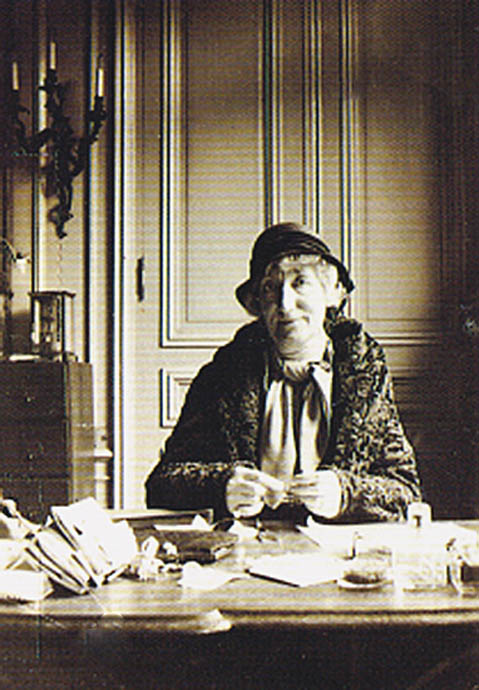
By the point the Parisian jewellery home of René Boivin grew to become well-known, René was lengthy gone. It was his widow Jeanne Poiret Boivin who was operating the present.
Jeanne Boivin selected to make use of feminine designers and, within the course of, developed a robust however female signature type below the Boivin identify – and put just a few different ladies on the map within the course of.
She was the lady behind the person whose identify is on so many jewels he by no means noticed.
Jeanne Poiret Boivin lived within the shadow of two distinguished Parisian designers, her brother Paul Poiret, a couturier, and husband René Boivin. Jeanne had a fantastic eye herself and proved a talented businesswoman, managing the corporate by herself for its 4 most well-known a long time.
René Boivin, a talented goldsmith, based the corporate in 1891, however his marriage to Jeanne Poiret two years later introduced connections to the style world by her brother, Paul Poiret, essentially the most well-known couturier in Paris within the years main as much as WWI.
You’ll be able to see a shared aesthetic within the jewellery his sister’s firm produced, together with a style for unique themes, colours and supplies, a ardour for the Orient and Center East.
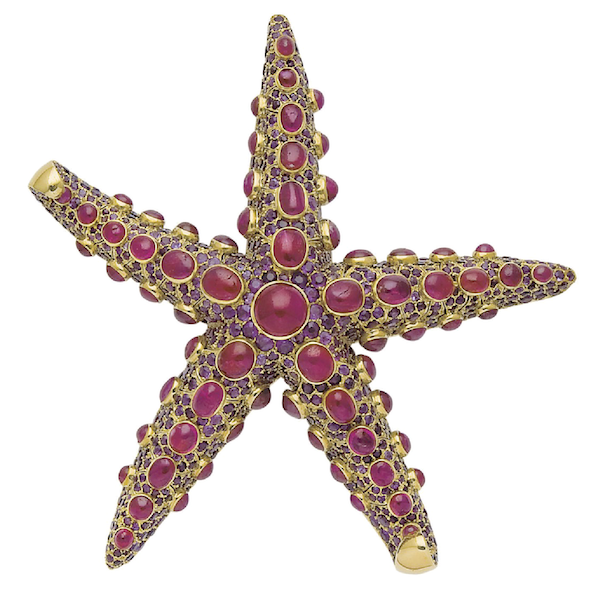
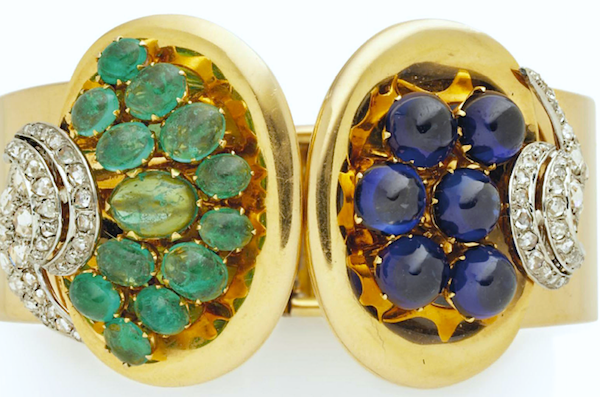
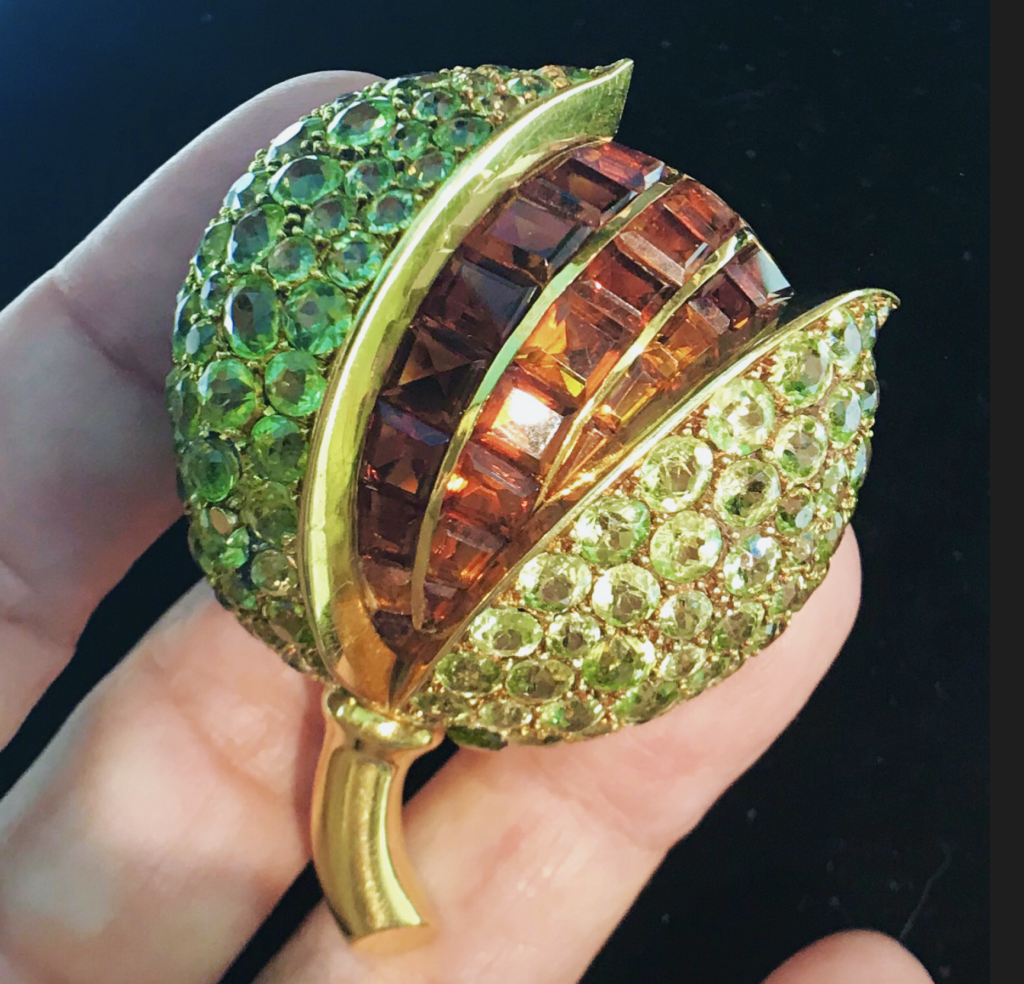
“The Home of René Boivin is a little bit of a misnomer in my view,” jewellery professional Dianne Lewis Batista says. “René Boivin died in 1917 on the age of 53, on the peak of his profession. It was his spouse who needs to be credited with a lot of the agency’s unimaginable fame.”
Having misplaced her son and husband throughout the conflict, Jeanne Boivin had two younger daughters to help. She had little alternative however to take over the enterprise, using others to attract her designs. “She knew how jewels needs to be worn, and like her brother, had a very good sense of favor,” Batista says. “Her work predated her time.”
It’s virtually unimaginable now to discover a jewel made by the home of René Boivin whereas René Boivin lived. Whereas he helped his spouse lay the inspiration for the enterprise and its design aesthetic, the collectible model we all know at present was created by Jeanne Boivin and the designers she employed, first Suzanne Belperron after which Juliette Moutard. Collectively, they created the distinctive look the home grew to become well-known for: daring, colourful jewels that moved past the tough geometry of Deco.
Learn extra about Jeanne Boivin.
Jeanne Toussaint (1887–1978)

Jeanne Toussaint dramatically impacted jewellery design throughout her a long time as director of Cartier’s luxurious jewellery division, which she took over in 1933. Beneath her steerage within the late Nineteen Thirties, Cartier started to maneuver away from summary Deco designs and into figurative work similar to a collection of black lacquer girl bugs and American Indian-head brooches.
She can be accountable for Cartier’s whimsical birds. Most well-known is the caged chook that Cartier launched in 1940, a logo of resistance towards the Nazi occupation, and the model that appeared in Cartier’s home windows days after Paris was liberated: the chook poised for flight, cage door open.
“She felt that jewellery wanted to be primarily based on pleasure,” says jewellery seller Dianne Lewis-Batista. “What higher topic than birds?” Unique parrots and flamingos have been Toussaint’s forte, as have been panthers—a picture Cartier is thought for to at the present time.
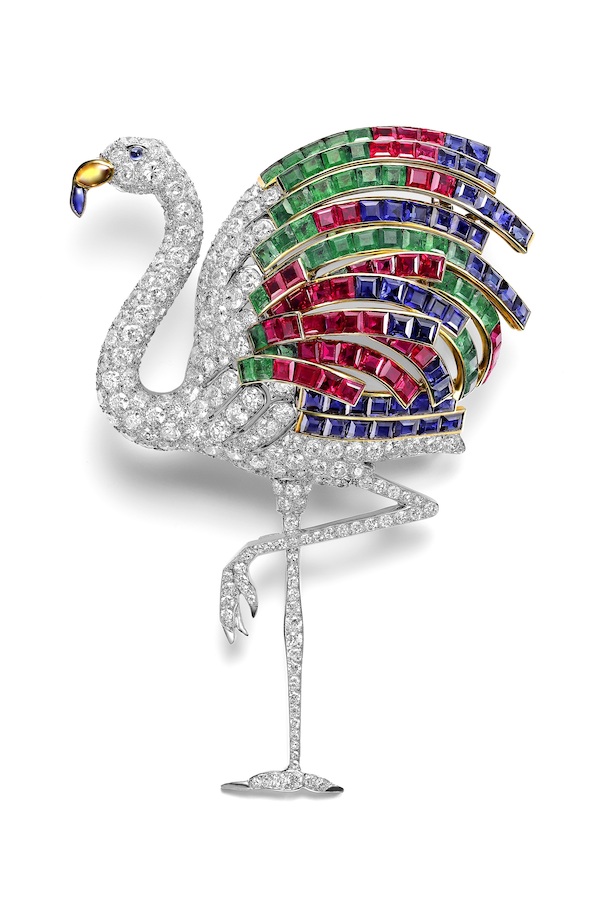
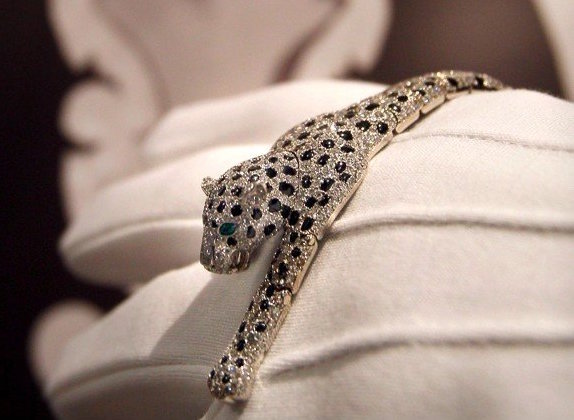
Nicknamed “the panther,” Toussaint clearly recognized with this glossy predator. Her condo was crammed with their skins and he or she wore panther coats.The panther jewels struck a chord with different strong-willed females of the day. Amongst its wearers: Barbara Hutton, the Duchess of Agha Khan and the Duchess of Windsor (who owned each items pictured above).
Learn extra about Jeanne Toussaint.
Suzanne Belperron (1887-1983)
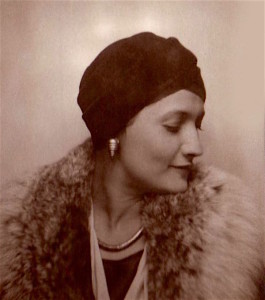
Suzanne Belperron honed her design expertise throughout 14 years on the Home of René Boivin. In 1933, wanting credit score for her personal designs, she left to work for gem seller Bernard Herz, who had been supplying Boivin since 1912. He gave Belperron free rein to design something she wished below her personal identify. Collectively, they turned his agency and her popularity as a designer into an eponymous jewellery model.
When Belperron left Boivin, she took not solely her design expertise, some say, however just a few of the designs as nicely. Audrey Friedman, who collects and sells Belperron’s jewellery by her Primavera Gallery in Manhattan, has seen virtually equivalent items, generally with Boivin’s marks, generally with Belperron’s. This can be partly as a result of Juliette Moutard, who took her place as head designer, took a pair years to develop her personal type.
Moutard did set up her personal design aesthetic at René Boivin within the a long time that adopted. And so did Belperron, constructing a world popularity that continues to develop.
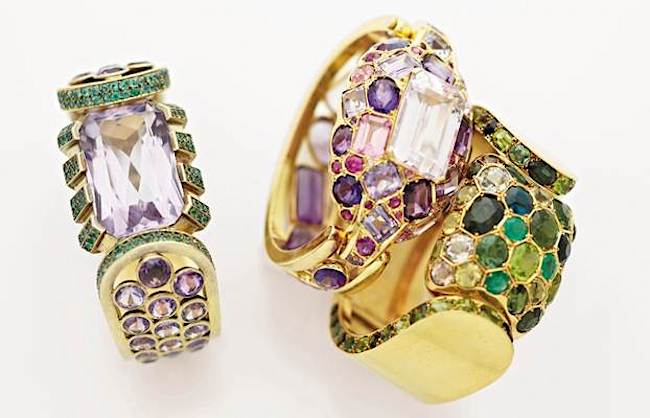
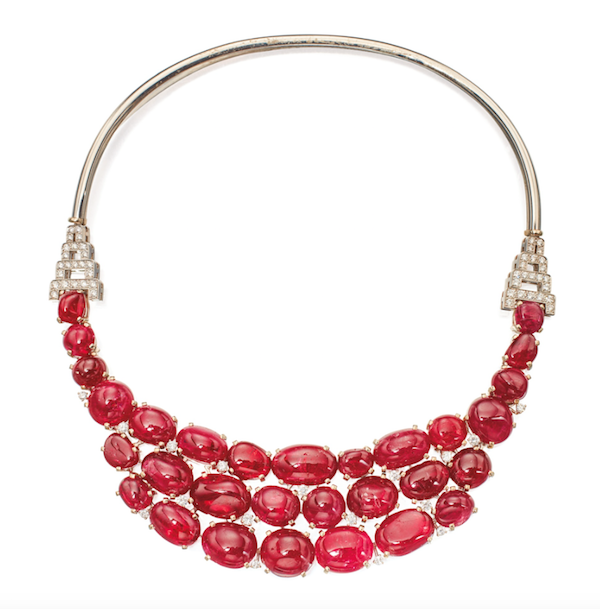
Signature Belperron items characteristic uncommon gem materials, typically minimize au cabochon or carved into fluid types, elevated to excessive jewellery treasured metals, generally diamonds. “Her expertise in designing jewellery was in combining and manipulating supplies,” says Friedman. “She was a fan of non-precious materials – agate, rock crystal, chalcedony and citrine – and made it the main focus of a bit. Her work was very private and really dramatic.”
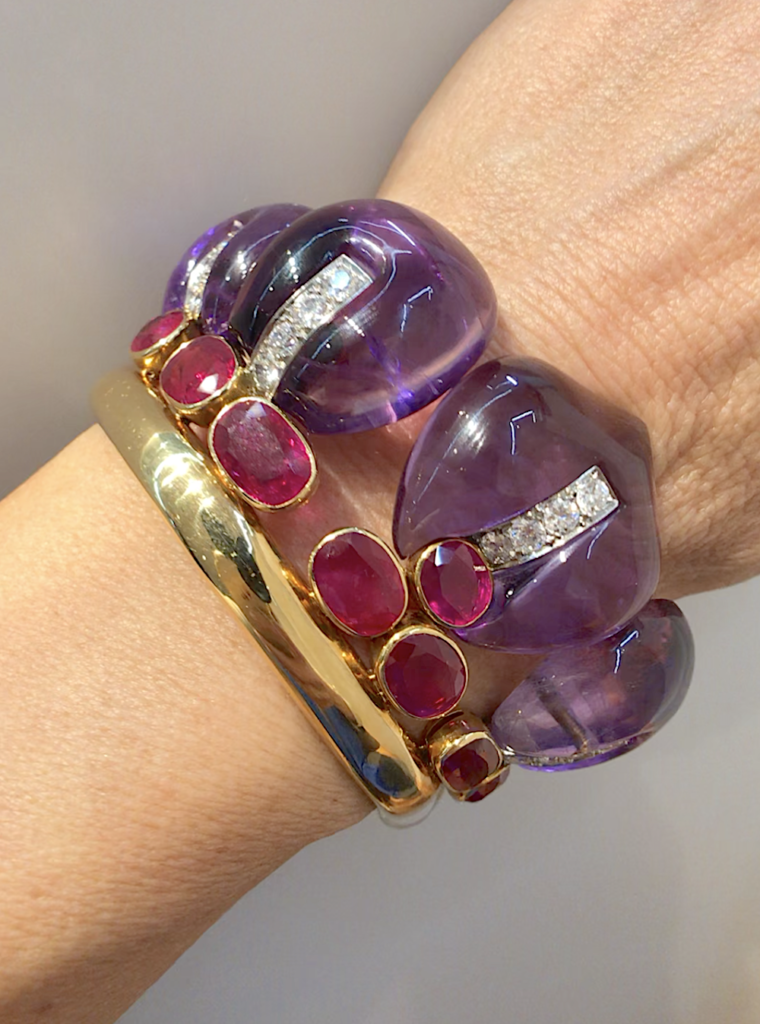
After the occupation of Paris, Herz, a Jew, was arrested and brought to Auschwitz, the place he died in 1943. When his son Jean returned to Paris two years later, having survived as a prisoner of conflict, Belperron took him on as a accomplice. Collectively, they ran Herz-Belperron till 1974.
Demand for Belperron jewels continues to develop. Within the final couple a long time, it’s actually taken off. Suzanne Belperron is now some of the avidly collected designers of the twentieth century.
Learn extra about Suzanne Belperron.
Elsa Schiaparelli (1890-1973)
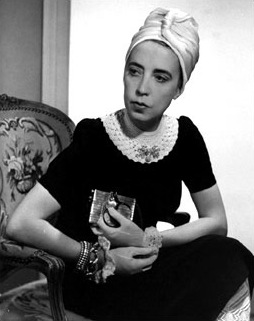 Elsa Schiaparelli closed her store in Paris virtually six a long time in the past, but her whimsical creations look as leading edge as ever. Woman Gaga might put on her shoe hat on stage and nobody would bat a watch.
Elsa Schiaparelli closed her store in Paris virtually six a long time in the past, but her whimsical creations look as leading edge as ever. Woman Gaga might put on her shoe hat on stage and nobody would bat a watch.
Schiaparelli, or “Schiap,” as she was identified (pronounced Skap), was nicely forward of her time. Her shoe hats, designed from a sketch by Salvador Dalí, first appeared in her 1937/1938 assortment. Schiaparelli shared Dali’s humorousness and love of visible puns, in addition to his want to shock and entertain. He equipped the puns and iconic pictures; she managed to make them absurd and stylish on the identical time. Quickly after these collaborations, Dalí started to significantly design his personal jewellery.
Schiaparelli labored between 1920 and 1954, however her heyday was the last decade earlier than the conflict. She drew from all the favored artwork actions of her day, together with Modernism, Futurism, Cubism, Deco, African artwork, however was notably drawn to Surrealism. Together with Dalí, Jean Cocteau and Albert Giacometti collaborated on designs along with her. Cecil Beaton and Man Ray photographed them. All thought of her a buddy and equal.
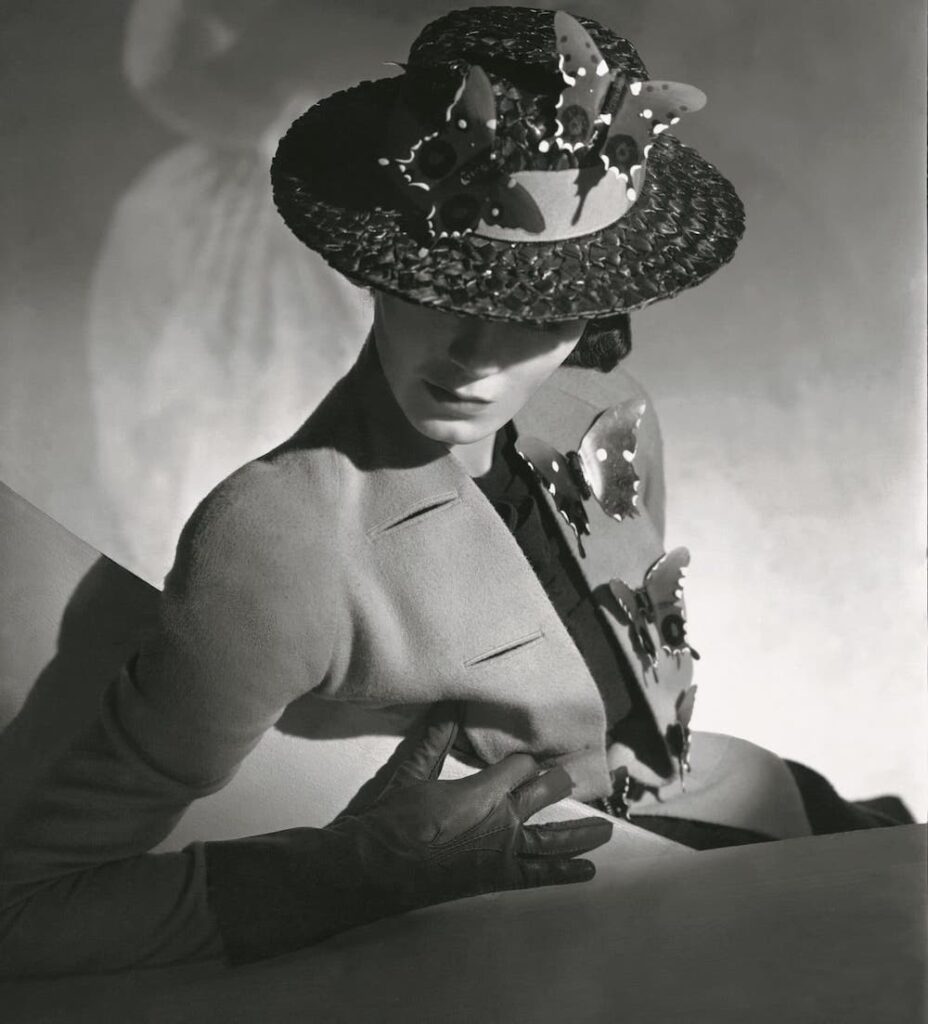
When Elsa Schiaparelli launched her first vogue craze in 1927—sweaters with trompe l’oeil bows—she had no coaching in clothes design. Two years later, she was outfitting the world’s most glamorous ladies and rocking vogue conventions along with her daring colours and body-conscious designs. Greta Garbo, Joan Crawford, Marlene Dietrich, and Katharine Hepburn wore her form-fitting fits, mannish trousers, and cocky hats.
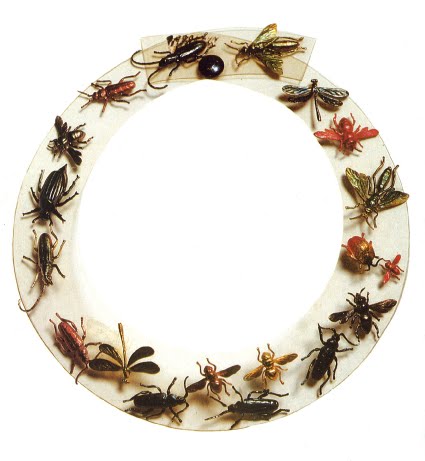
Elsa Schiaparelli additionally created some memorable costume jewellery and equipment, together with the necklace (above) that made the wearer seem to have a parade of bugs crawling round her throat. Her jewellery designs most likely started with the fasteners she designed for her garments from wooden, china, celluloid, glass, crystal, amber, white jade, sealing wax – buttons formed like shoelaces, snails, tops, padlocks, nuts and bolts, espresso beans, lollipops, peanuts, spoons, vegetables and fruit.
“She is accountable for the sensation of spontaneous youth that has crept into all the things,” Vogue raved in 1935.
Learn extra about Elsa Schiaparelli.
Marianne Ostier (1902-1976)
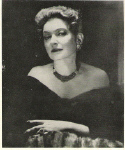 Marianne Ostier was the first designer behind Ostier, Inc., a jewellery agency she ran along with her husband, Oliver Ostier in mid-century Manhattan. A winner of many prestigious diamond design awards, Ostier was identified for intricately random mountings and natural textures that replicate her coaching as an artist.
Marianne Ostier was the first designer behind Ostier, Inc., a jewellery agency she ran along with her husband, Oliver Ostier in mid-century Manhattan. A winner of many prestigious diamond design awards, Ostier was identified for intricately random mountings and natural textures that replicate her coaching as an artist.
Marianne Ostier studied on the Vienna Academy of Arts and Crafts and was a working towards painter and sculptor when she met her husband, identified then as Otto Oesterreicher, a third-generation courtroom jeweler in Austria. They got here to the U.S. in 1938, after the Nazi annexation of Austria, and launched a jewellery enterprise below their new identify.
A number of Ostier jewels offered nicely above estimates at Sotheby’s final 12 months, together with a diamond tiara that fetched $225,000, made for European royalty earlier than the conflict. It showcases each Ostier’s fluid approach with diamonds and platinum, and the regal connections the Ostiers had once they landed state-side. One other diamond-and-platinum piece in that public sale reveals the designer 17 years later, at her Mid-Century Fashionable peak.
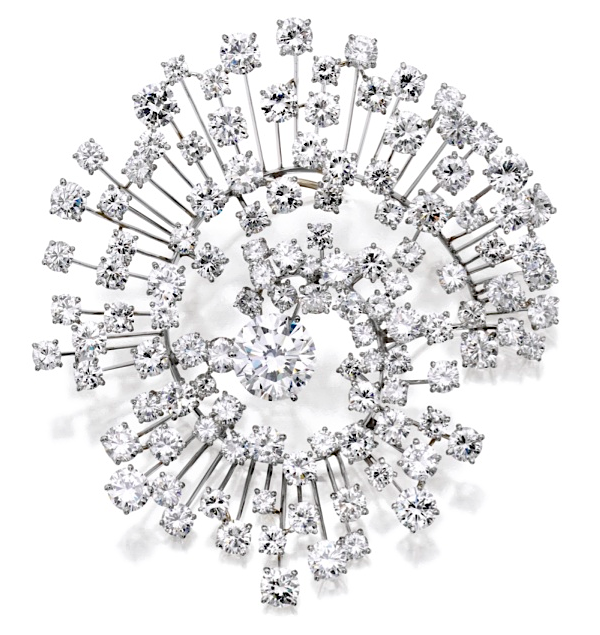
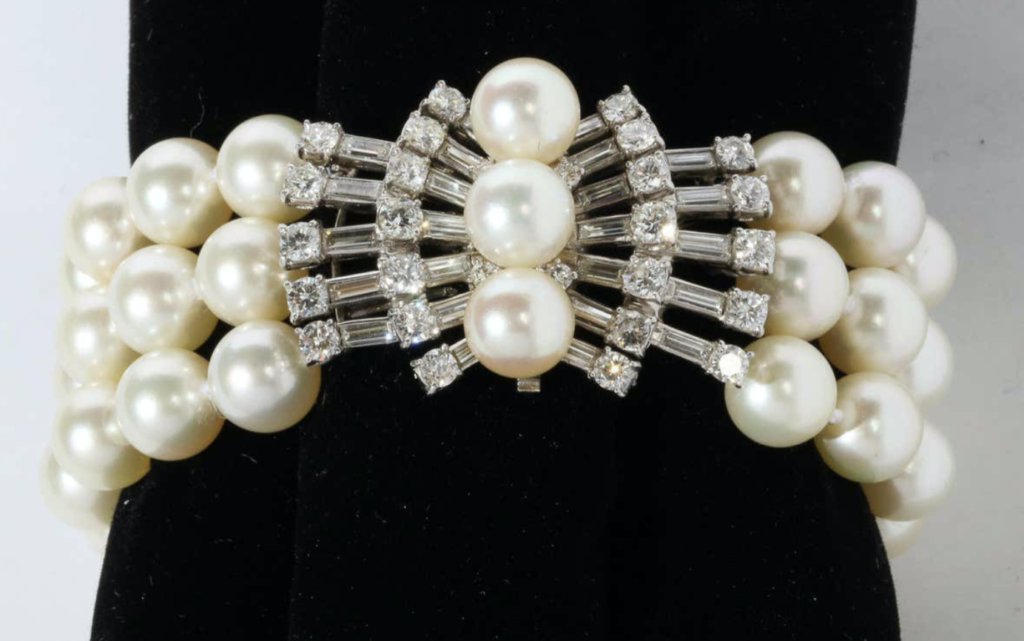
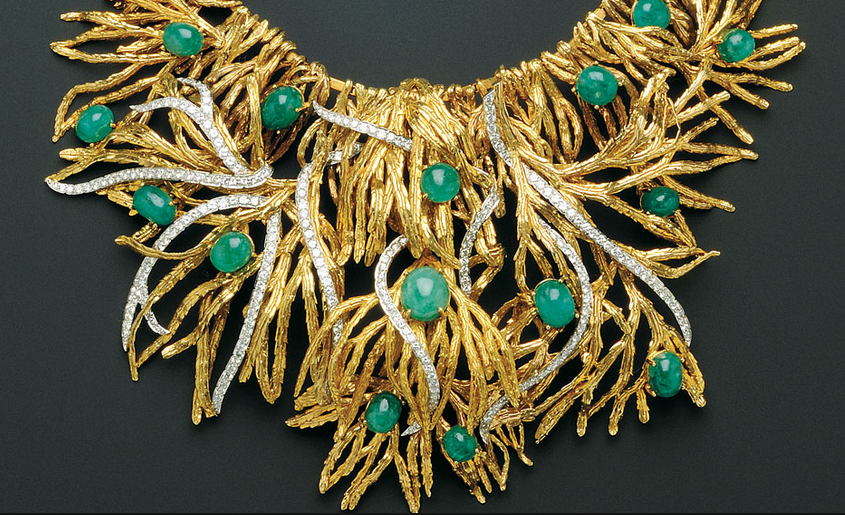 It was on American shores that Ostier developed a really totally different signature type, involving much less symmetrical, extra natural kind – and an equally astonishing mastery of gold. Her dramatic “Voodoo” necklace of 18k gold fringe and cabochon emeralds, interspersed with diamond-set platinum, seems like very luxurious seaweed and should have been fairly a celebration stopper when it debuted.
It was on American shores that Ostier developed a really totally different signature type, involving much less symmetrical, extra natural kind – and an equally astonishing mastery of gold. Her dramatic “Voodoo” necklace of 18k gold fringe and cabochon emeralds, interspersed with diamond-set platinum, seems like very luxurious seaweed and should have been fairly a celebration stopper when it debuted.
Learn extra about Marianne Ostier.
Margaret De Patta (1903-1964)
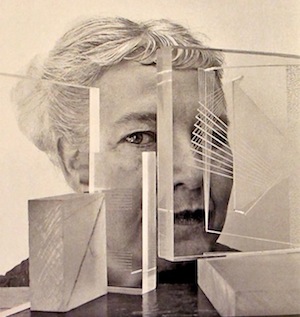 Margaret De Patta pioneered so many features of studio artwork jewellery we see now that many items she designed earlier than World Conflict II appear like they might have been made yesterday – by an inventive visionary. Should you weren’t fortunate sufficient to see the current retrospective of her work on the Museum of Arts & Design in NYC, you’ll be able to nonetheless get the hardcover catalog printed final October.
Margaret De Patta pioneered so many features of studio artwork jewellery we see now that many items she designed earlier than World Conflict II appear like they might have been made yesterday – by an inventive visionary. Should you weren’t fortunate sufficient to see the current retrospective of her work on the Museum of Arts & Design in NYC, you’ll be able to nonetheless get the hardcover catalog printed final October.
Area Gentle Construction: The Jewellery of Margaret De Patta was one in every of my favourite acquisitions that 12 months. As studio jewellery goes, a lot of De Patta’s work appears so modern, it’s arduous to recollect how loopy it should have appeared to the jewellery world when she was making it. “Her jewellery was very contemporary, very avant garde, very stunning to some individuals,” says Julie Muniz, one of many authors and co-curators of the exhibition.
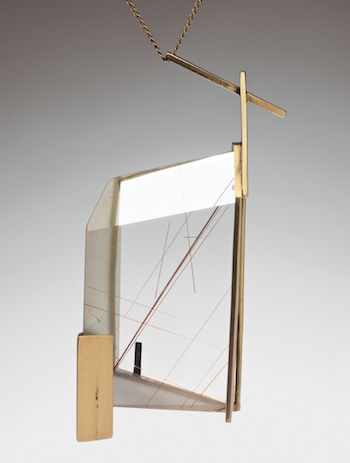
De Patta was learning portray on the Artwork College students League in Twenties NYC when she obtained concerned with jewellery design, and you’ll clearly see that affect of early Fashionable artwork in her jewellery. She made some fascinating kinetic items, with elements that swivel round to rework the design, and included atypical seaside pebbles six a long time earlier than that will change into stylish amongst artwork jewelers.
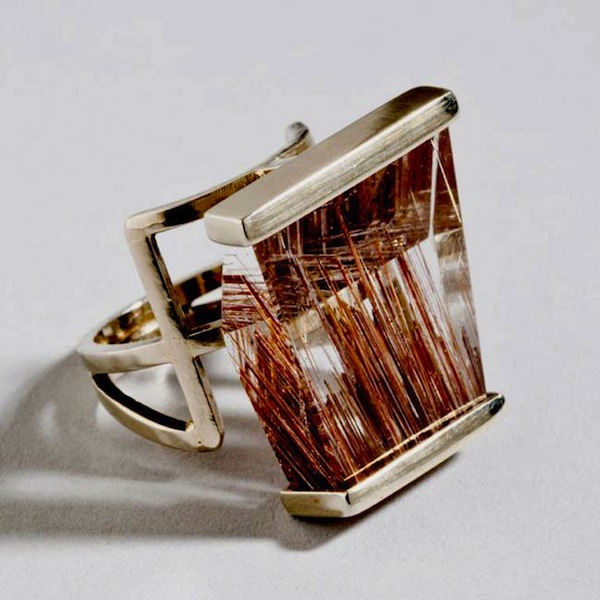
However essentially the most beguiling jewels she made – or “wearable sculpture” as she referred to it – have been the “opticuts” she designed with Bay Space lapidary Francis Sperison. De Patta did superb issues with rutilated quartz, designing metallic frames to reflect the angles of the rutilations and utilizing the quartz itself to create optical distortion.
Learn extra about Margaret De Patta.
There are numerous extra ladies who paved the best way for the jewellery world as we all know it. I’ll attempt to get to them as they floor at public sale and exhibition. I believe ladies will proceed to play a significant position in jewellery design. I’ve interviewed many proficient male designers and makers over time, however I’m assembly much more ladies nowadays.
This previous 12 months, I’ve watched a brand new era reactivate an outdated battle for equal rights, culminating in tens of millions taking to the road all over the world for the Girls’s March in January. (I marched in Washington DC, with women and men.) We’ve come a great distance however it’s turning into clear we’ve obtained a solution to go. At the moment, let’s rejoice the courageous and proficient visionaries who obtained us this far.
Content material ©Cathleen McCarthy. All rights reserved.
